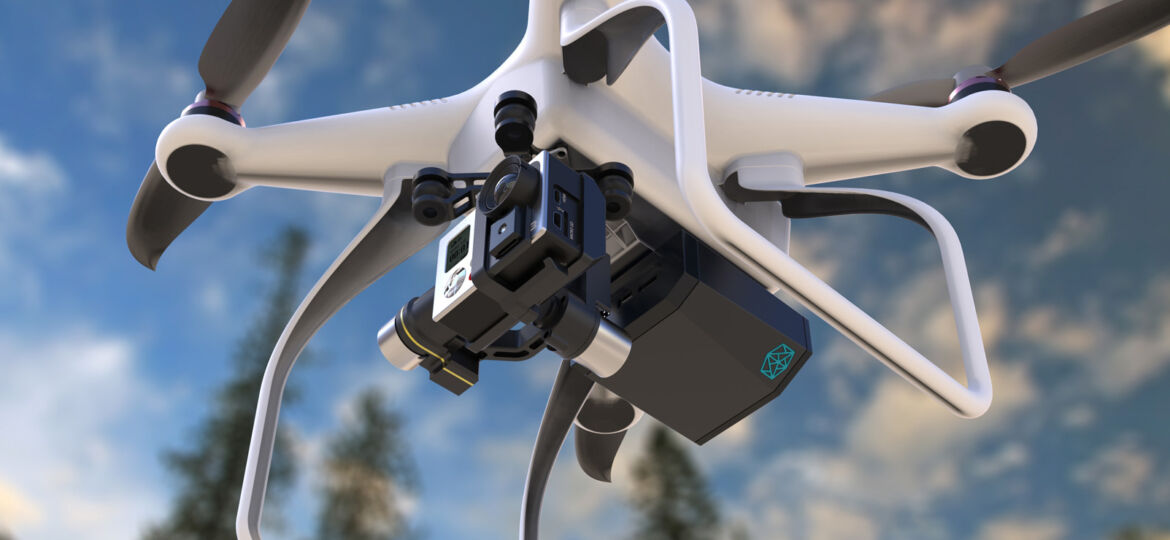
WHY THIS MATTERS IN BRIEF
Autonomous drones – revered by extreme sports enthusiasts and feared in the battlefield – are on the rise.
We all know that the next evolution of drones will be fully autonomous rather than just semi-autonomous as some of them, such as delivery or defence drones, are today. After all, everything that we’re doing as a species at the moment seems to somehow – whether it be directly or indirectly – manage to take humans out of the loop, whether that’s AI, bots, robots or autonomous vehicles. But while there has been the odd occasional news snippet about another company experimenting with autonomous drones when we’ve looked into it they all too often don’t pass muster. We don’t simply want drones that are accomplished at flying around in an empty, obstacle free space – we want drones that are fast and agile enough to dodge bullets and trees with ease that can follow us around and record our every move and stream thousands of selfies a second to our adoring YouTube fans. And now we have one – or at least one that dodges the latter – a drone capable of dynamically detecting and avoiding obstacles at a useful speed.
A Silicon Valley company called Skydio (Crunchbase report), founded by a team of researchers from MIT and Google X’s Project Wing, and backed by legendary venture capitalist Andreessen Horowitz have posted a video that shows a drone following people jogging and biking while autonomously avoiding tree trunks and branches. In other words, it’s what other drone companies have been promising to be able to do for years, except, as you can see, Skydio actually delivers.
The drone has a crazy camera set up, which will eventually be whittled down and streamlined over time, and can follow the biker while dynamically avoiding obstacles that show up in front of it basically out of nowhere. It has very little time to react, and it also has to avoid stuff in such a way that it can keep going in the direction that it needs to go.
We’re usually very skeptical about drones doing amazing things in videos, expecting to see localization systems lurking in the background, or the obvious polish of careful editing and multiple cameras and takes but Skydio’s video looks like they just took their drone out to the woods for the day and let it do its thing.
“All the footage is just taken from our normal testing,” said Adam Bry, one of the company’s founders.
“Nothing was staged and it’s all fully autonomous. All of the navigation is done entirely based on a multi-camera array with all computation done onboard on a state of the art mobile CPU.”
This is very cool stuff, but it’s less surprising than it could be for Skydio to come out of nowhere with this, because of where the company comes from. Skydio was founded by Bry and his labmate Abe Bachrach, from MIT’s Robust Robotics Group. Both Bry and Bachrach spent a year and a half at Google X working on Project Wing after graduating from MIT, but left to start Skydio in 2014. Google’s interest in these guys is no surprise; the research that they did at MIT culminated in a demonstration of a fixed wing drone autonomously zipping around an underground parking garage.
While the parking garage demo used a pre existing map the video also shows projects that Bry and Bachrach worked on at MIT enabling dynamic on-board obstacle avoidance for quadrotors and it’s this research formed the foundation for Skydio, as Bry explains:
“A lot of what we learned at MIT we’re incorporating into our products at Skydio. When you do a really good job on all the low level pieces – planning, control, 3D perception – the end behavior is magical. The airplane flying through the parking garage was an incredible demonstration, but it wasn’t something we could share with the world in any kind of scalable way. It relied on a pre-mapped environment and a heavy, expensive LIDAR sensor. At Skydio we’ve developed similar capabilities using sensors that weigh and cost almost nothing. Putting that kind of capability in consumers hands is an incredibly exciting thing to get to be a part of.”
Skydio’s drone is still a prototype but their technology has impressed enough people that they wrapped up a $25-million Series A back in January and they’re optimistic about what they can accomplish.
“Part of what makes this exciting is the long runway of stuff to be built and the new products and use-cases that will open up as the technology matures. Ultimately, all the information a drone needs to be good at its job is in the images. The challenge is extracting it and using it. Full scene understanding, deeper context awareness, learning based on user data and feedback, will all unlock more powerful autonomy. I think the ultimate test will be how these products perform in customer’s hands—our goal is to provide a trustworthy and magical experience,” finishes Bry.

















[…] market where many companies, including DJI and Skydio, for example, are already experimenting with autonomous drones and where companies like Uber and Airbus are experimenting with autonomous […]